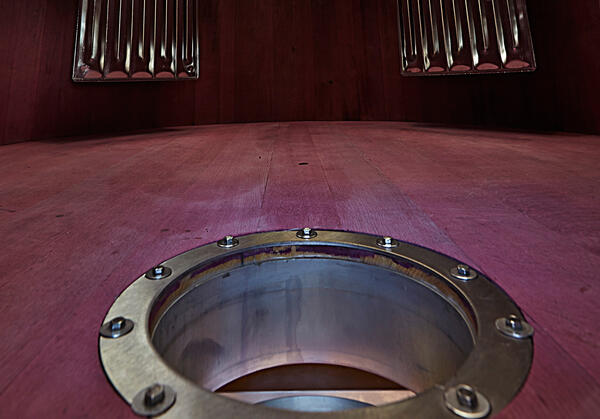The vineyards
For generations, Mittelburgenland has been considered a stronghold of the autochthonous Austrian grape variety, Blaufränkisch. The loess and loam content of the soils usually produce deep and, at the same time, heavy and powerful wines. The conditions are a bit different in the top vineyard site, Hochberg, where mica schist is found interspersed with loess and gravel. However, on the Höhnrücken, the foothills of the Ödenburger mountains, the soils are not heavy, but rather are alpine with a rocky sub-surface that provides good heat storage. Born here are wines with a light-footed character, and show clear structure and minerality.
Part of the grapes for the Reunion wines come from slopes with a steepness of up to 30%: the Reunion Vision grapes are from the slopes exclusively; the majority of the Reunion Passion grapes are grown on these as well. The slopes are favourably exposed to plenty of direct sunlight during the ripening period. At the same time, the soils here are meagre, which means the vines must form deeper roots – ultimately yielding healthier, more vital grapes.
Also important is that the vineyards are relatively high for Burgenland - reaching to 450 meters above sea level. Here, the nights are cool, which helps to slow the ripening process of the grapes and leads to the formation of thick skins - both of which benefit the development of strong aromas and moderate alcohol levels.
The grapevines for the two styles of Reunion are, on average, more than 20 years old.
From Vineyard to Cellar
The Blaufränkisch grapes thrive in the ideal conditions of these top vineyards. The vine rows are green and, thanks to the presence of beneficial organisms living here, the use of insecticides are completely avoided. Gentle foliage work in the summer ensures high physiological maturity at harvest time. Grape yields are limited: 4500 kilograms per hectare for Reunion Passion; and 4000 kg / ha for Reunion Vision. The harvest takes place very late in the year. Grapes from the 2015 vintage were ready at the end of October. Picked by hand and under strict selection, only fully ripe and healthy grapes were allowed in the harvest baskets.
The Reunion Passion is fermented in steel tanks with its own natural yeasts; no selected yeasts are added. For the 2015, the wine spent four weeks on the mash and went through malolactic fermentation on the mash as well. Then the wine was filled in barriques – which are, for the most part, used 225-liter barrels, depending on the vintage. With the supreme 2015 vintage, only 20% of the barrels were used (second filling). In general, the wine first matures on the fine lees for several months to give it fullness and suppleness, and then spends at least ten months in small wooden barrels. For 2015, it was 14 months.
After its bottling and a few weeks of storage, the Reunion Passion will be launched on the market in the third spring following the harvest.
The Reunion Vision goes through spontaneous fermentation in open wooden vats, and without the addition of selected yeasts. The wine spends four weeks on the mash and undergoes malolactic fermentation during this period as well. It is then transferred into small barrels made of new, lightly toasted oak. As with the Reunion Passion, this wine remains on the fine lees during the first months of maturing. The maturation period lasts for 16 months in new barriques. The Reunion Vision will come on the market in the summer or fall of the third year following the harvest.
Cellarmaster Gerald Wieder emphasises the importance of gentle treatment in the cellar. "We intervene only with great restraint; we let the wine have its own will and give it all the time it needs during fermentation on the mash and during maturation," he says.
The Wines
Both styles of Reunion are strong and expressive - but not heavy. Those looking for international comparisons may find some similarity to wines from southern Rhône or Priorat. While the Reunion wines show very individual character and personality, the characteristics of the variety Blaufränkisch have just as much weight as those of the origin of Mittelburgenland.
On the nose, the Reunion wines exude dark fruit with notes of ripe sour cherries, elderberries and blackberries along with scents of herbs and dark tobacco. The first impression on the palate shows freshness and concentration; dense, focused and complex wines. A firm structure with finely woven tannins gives backbone and grip together with a touch of velvety opulence. Underscoring the dark fruit notes is a distinct minerality, which is even more pronounced in the Reunion Vision than in its little brother, the Reunion Passion.



